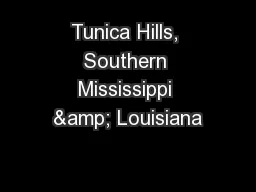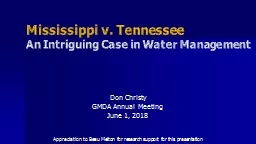PPT-Tunica Hills, Southern Mississippi & Louisiana
Author : test | Published Date : 2016-06-27
25 May 2008 AMNH REVSYS volunteer Kari J McWest and 10yearold daughter Malea traveled about 900 miles to reach the historic Natchez and Washington area of Mississippi
Presentation Embed Code
Download Presentation
Download Presentation The PPT/PDF document "Tunica Hills, Southern Mississippi &..." is the property of its rightful owner. Permission is granted to download and print the materials on this website for personal, non-commercial use only, and to display it on your personal computer provided you do not modify the materials and that you retain all copyright notices contained in the materials. By downloading content from our website, you accept the terms of this agreement.
Tunica Hills, Southern Mississippi & Louisiana: Transcript
Download Rules Of Document
"Tunica Hills, Southern Mississippi & Louisiana"The content belongs to its owner. You may download and print it for personal use, without modification, and keep all copyright notices. By downloading, you agree to these terms.
Related Documents














